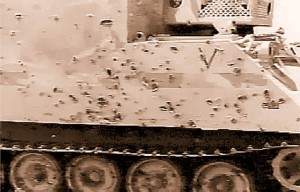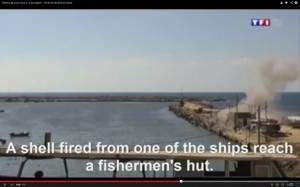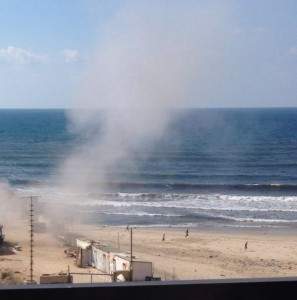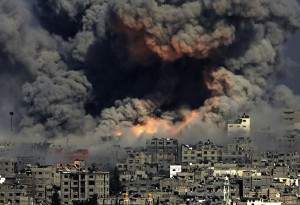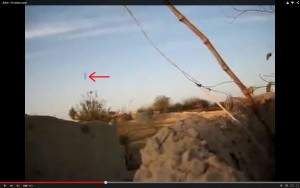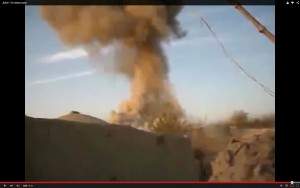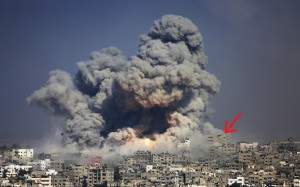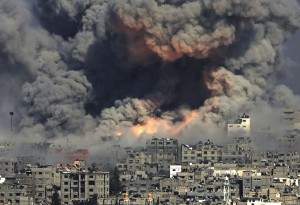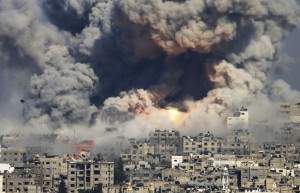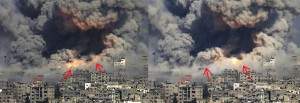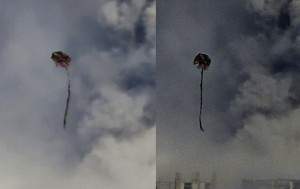Will people ever stop lying about Israel?
May 19, 2023 by Thomas Wictor
Someone directed me to a piece by Washington Post writer William Booth: “Israeli veterans say permissive rules of engagement fueled Gaza carnage.” No. As Booth himself writes, “The testimonies in the report are anonymous and impossible to independently verify.” That means that both Booth’s piece and the Breaking the Silence report “This is How We Fought in Gaza 2014” are utterly without value. In fact I’d bet any amount of money that the report is more of the global compulsive lying about Israel. And I’d be right!
Here are some of Breaking the Silence’s donors.
The European Union, Misereor (Germany), Broederlijk Delen (Belgium), Norway, AECID (Spain), Dan Church Aid (Denmark), ICCO (Netherlands), CCFD (France), Human Rights and International Law Secretariat (joint funding from Sweden, Switzerland, Denmark and the Netherlands), Sigrid Rausing Trust (UK), SIVMO (Netherlands), Rockefeller Brothers Fund, Open Society Institute, New Israel Fund.
It’s too stupid for words. Even worst-case-scenario Palestinian casualty figures don’t support the argument that the IDF had lax rules of engagement. One of the accusations is that Israeli artillery caused heavy civilian casualties. The IDF fired about 19,000 high-explosive (HE) M107 155mm rounds from their M109 self-propelled howitzers.
The size of the M107.
That entire cylinder of metal goes flying out of the gun barrel. An HE round is packed with TNT or Composition B. When it explodes, each M107 HE round shatters into about 2000 fragments.
According to the Palestinian Ministry of Health, about 2100 Palestinians were killed during Operation Protective Edge. For the sake of argument, let’s assume that all 2100 were civilians killed by artillery. That means that the IDF had to fire nine 155mm rounds to kill one person. On what planet would that be considered indiscriminate artillery fire? A single 155mm HE shell can kill dozens if not hundreds of people. These images show the signature of a 155mm HE round.
Where are all the dead Palestinians? I’ve examined the casualty figures carefully, and I can tell you that the IDF produced the least amount of deaths from artillery that I’ve ever seen in a major conflict. At least half of the dead were adult combatants. Since twice as many boys as girls in the nine-to-seventeen age cohort were killed, we can assume that a large percentage of the children who died were combatants. There were female combatants, and even “human rights” organizations admit that the Palestinian “casualty figures” include deaths from natural causes, accidents, and murders.
We also have to remember that the IDF dropped aerial munitions; fired rifles, machine guns, and mortars; threw hand grenades; and launched rockets and missiles. So how many people were killed by those 19,000 HE artillery rounds? We’ll never know the answer, but it can’t be more than 400, including combatants. That’s as far from “indiscriminate” fire as you can get.
William Booth was in the al-Deira Hotel on July 16, 2014, when Ismail, Mohammed, Ahed, and Zakaria Bakr were said to have been killed by the IDF on the beach. This is what Booth wrote about that day.
I had just returned to the hotel to type up some notes and file inserts on the day’s news when there was a large explosion on the quay at the port, a little after 4 o’ clock in the afternoon.
We could smell the charge.
The al-Deira is 328 yards (300 meters) from the breakwater where Ismail Bakr’s body was recovered. Here’s the smoke cloud from the air-to-surface missile that the IDF fired at the steel shipping container.
Only seconds later, Stephanie Dekker of al-Jazeera photographed four boys running from the breakwater.
Booth says he smelled the charge right after the explosion. Do you think the smoke in those two photos wafted 328 yards and then went up William Booth’s nose, or do you think it was dissipated by the wind?
Speaking of smoke, Booth’s piece about Breaking the Silence is useful because it proves that one of the most popular and horrifying images from Operation Protective Edge is fake.
People love to send me this photo as proof of Israeli brutality.
That’s supposed to be an Israeli air strike. BALDERDASH! The biggest Israeli explosive aerial munition is the MK-84 2000-lb (945-kg) bomb. There are so many fake explosion photos and videos that I have to restrict myself to ones I know are authentic, so I apologize for using this one again. Bear with me, because it proves the phoniness of that beloved Gaza monster-explosion.
This is the MK-84 bomb, which is 10.7 feet (3.3 meters) long.
We can estimate that the smoke towers reached a terminal height of about twenty times the length of the bomb.
That’s 214 feet (65 meters). William Booth’s piece on Breaking the Silence shows an uncropped version of the Gaza monster-explosion. The red arrow indicates an eight-story residential building.
An eight-story residential building is 108 feet (33 meters) tall. Thus the explosion reached a minimum height of about 700 feet (213 meters), more than three times the size of a blast that the largest Israeli bomb could make.
Initially I thought this was a Hamas improvised explosive device (IED) made from ammonium nitrate/fuel oil (AMFO) because of the orange smoke (see no. 14). However, high-resolution versions of the photos show that they’re fake. The explosion is computer-graphic imagery (CGI).
This is the original image that everyone sends to me. I lightened it using photo-enhancement software.
And now the version from the William Booth piece, cropped to match the original.
In a side-by-side comparison, you can see that the bases of the explosions are completely different, while the other parts are identical.
The best is the stupid flying palm tree on the left of both images.
Not even remotely similar.
Both photos are composites. That weird, hooded explosion doesn’t comport with any known law of physics; the windows of every building have been blackened; and the David Lynch palm tree is clumsily superimposed.
Like Breaking the Silence, the explosion is as fake as this.
The image is a composite, but that is my real brain, taken from an MRI and scaled to actual size.
Tiny, isn’t it?
This article viewed 1779 times.



